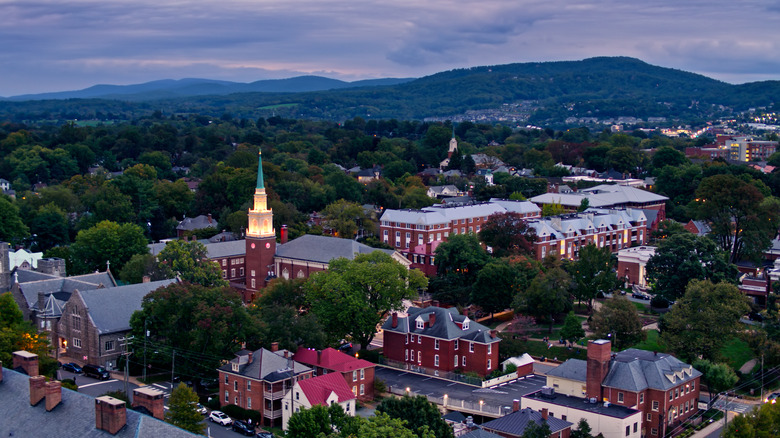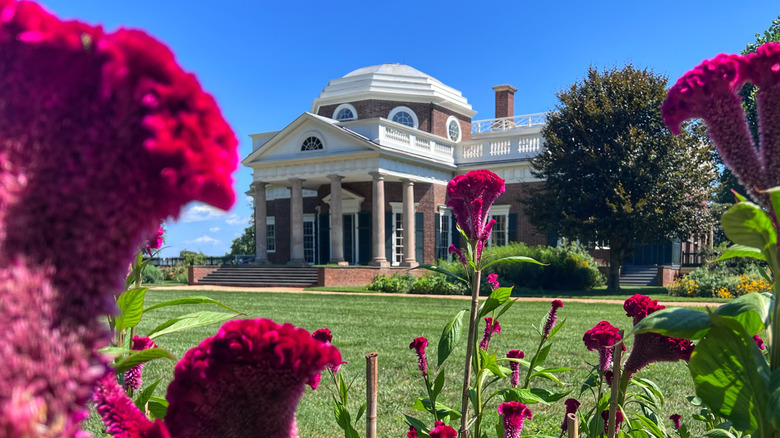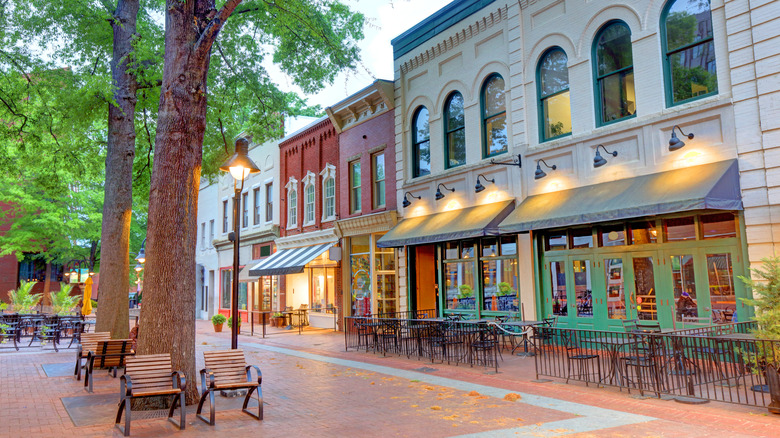Virginia's Charming College Town Nestled In The Mountains Offers Trails, Art, And History
Virginia, renowned for its rich history and stunning natural beauty, is home to some of the country's most iconic historical destinations. From the cobblestone streets of Colonial Williamsburg (the state's most visited attraction) to the breathtaking landscapes of Shenandoah National Park, the state offers a blend of cultural heritage and is an outdoor recreation lover's dream. Among Virginia's gems is Charlottesville, a picturesque college town tucked into the foothills of the Blue Ridge Mountains. Known for its stunning architecture, vibrant arts scene, and abundant outdoor opportunities, Charlottesville is an ideal destination for travelers looking to experience history, culture, the arts, and nature in one place.
Getting to Charlottesville is easy, with multiple options available. The Charlottesville-Albemarle Airport is just nine miles from downtown, providing convenient access for visitors arriving by air. The town is also within driving distance of Richmond (just an hour away), and Washington, D.C., approximately two hours to the north. Charlottesville is accessible by train, making it a scenic and hassle-free journey from surrounding regions. The best time to visit is May through July when Monticello's gardens are in full bloom, and the weather is perfect for outdoor adventures. After the University of Virginia's spring graduation, the city takes on a quieter, more relaxed ambiance, making it an excellent time to explore.
Stepping into history: A journey through Charlottesville's past
Charlottesville is steeped in American history, making it a fascinating destination for those interested in the nation's past. The University of Virginia, founded by Thomas Jefferson, is a UNESCO World Heritage site and one of the most distinguished academic institutions in the country. Jefferson envisioned the university as an "academical village," a concept that remains central to its layout and function today. The Rotunda, the university's architectural centerpiece, reflects his neoclassical design and continues to inspire students and visitors alike.
Just outside the city, Monticello, Jefferson's beloved home, stands as an enduring testament to his ingenuity and complex legacy. Visitors can tour the mansion, stroll through the meticulously maintained gardens, and learn about the lives of the enslaved people who lived and worked on the property.
Additionally, history enthusiasts can explore James Monroe's Highland, the former residence of the fifth U.S. president, and Montpelier, the home of James Madison, the fourth U.S. president and architect of the Constitution. Each site provides insight into the early days of the Republic and the individuals who shaped the nation's foundation.
For those interested in African American history, the Jefferson School African American Heritage Center offers an in-depth look at the contributions and struggles of Black Americans in the region. Wind down at the Michie Tavern, a colonial-era landmark providing a living history experience complete with period-style meals and a glimpse into 18th-century Virginia life and some of the best of small-town America.
Embracing art and adventure: Exploring Charlottesville's creative and outdoor scenes
Beyond its historical significance, Charlottesville boasts a thriving arts scene and a wealth of outdoor adventures. The town's cultural offerings include live performances at the historic Paramount Theater and major concerts at the John Paul Jones Arena. Music lovers can enjoy more intimate shows at venues like the Southern Café and Music Hall or the Jefferson Theater. The IX Art Park, a free and open creative space, provides a dynamic setting for public art displays and experiential art. The complex includes the Looking Glass, Virginia's first immersive art experience, which invites visitors to engage with fantastical, interactive installations transporting visitors into a world of imagination.
For outdoor enthusiasts, Charlottesville is a gateway to some of the best trails in Virginia. The Rivanna Trail, a 20-mile loop encircling the city, offers a mix of wooded paths and river views. The Saunders-Monticello Trail provides a scenic route leading to Monticello, featuring accessible boardwalks and picturesque landscapes. Combine hiking and swimming with the Blue Hole Trail, a 3.1-mile out-and-back trail that leads to a stunning swimming hole. While you're in the area, hike one of the Shenandoah National Park trails, where over 500 miles of routes await exploration. Don't limit yourself to firm trails, the Rivanna River offers a different kind of trail, with kayaking, canoeing, stand-up paddleboarding, and tubing opportunities available through local outfitters. With 80 miles of trails from the edges of the Blue Ridge Mountains all the way into town, surely there is a trail for everyone.
With its seamless blend of history, culture, and adventure, Charlottesville is an underrated historic destination that offers something for every traveler. Whether you're strolling through historic landmarks, admiring local art, or hiking through the Blue Ridge Mountains, this charming college town invites you to discover its many treasures.


